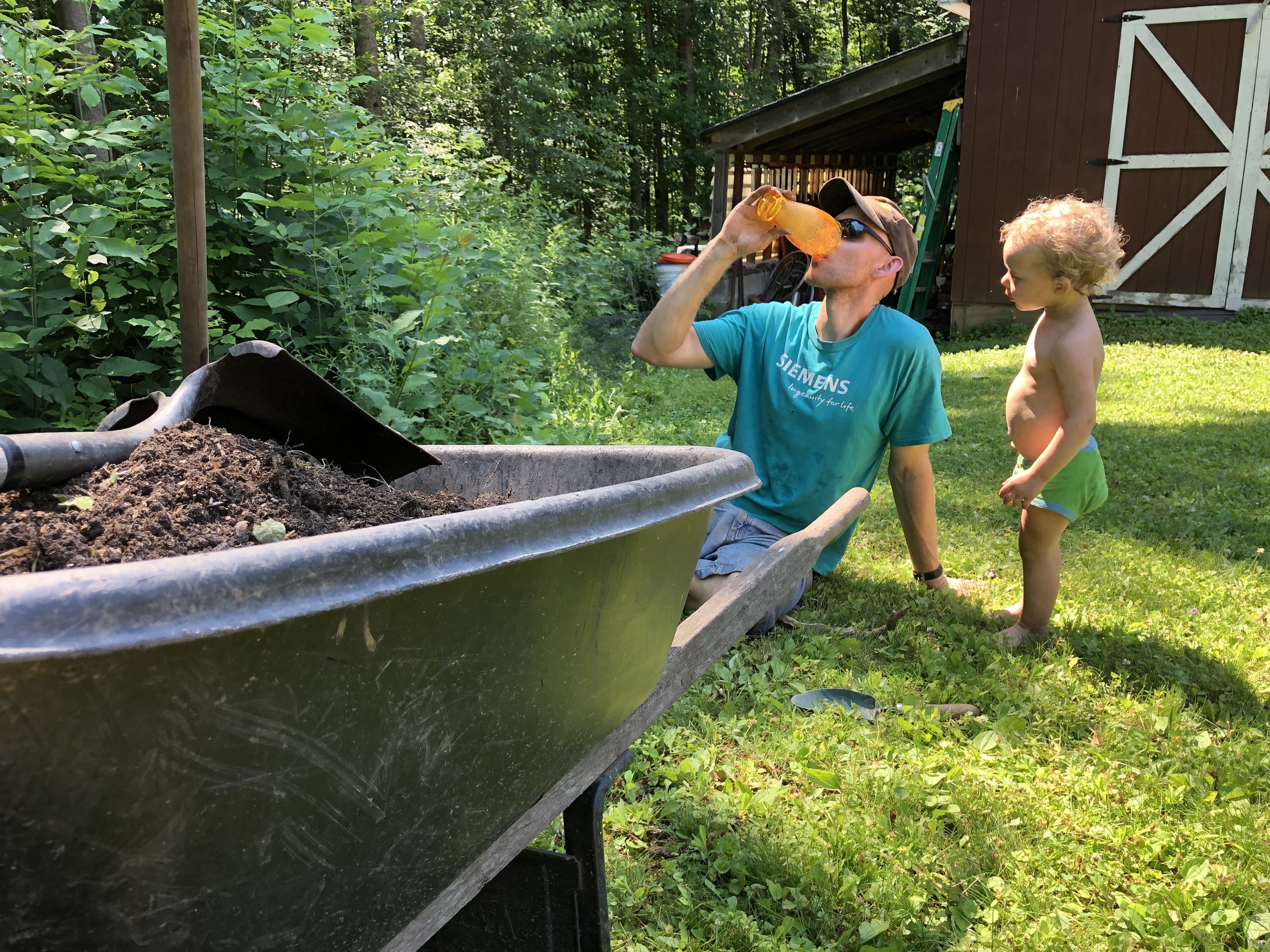Spring is for Syrup!
Warm sunny days and nights just below freezing means syruping season in Wisconsin. The trees that bore the burnt red, golden orange, and bright yellow leaves just months earlier delivers one of Wisconsin’s sweetest treats in the spring. The sun on one’s face accompanied by the chorus of “Drip-drip” from sap filling buckets and snow melting makes spring a beautiful time to be in the woods.
Simple but not easy
Two rows of wood are needed for a season’s worth of maple syrup from about 80 tapped trees.
The process to make liquid gold, maple syrup, is simple - collect sap and boil it down. Although the steps may be simple, the work is labor intensive and time consuming. First, paths need to be cleared through several feet of snow to access the maple trees. Next, someone needs to trudge through the knee deep snow to tap each tree, install a tap, and hang a bucket. In total, each maple produces enough sap to make 1-2 quarts of syrup per year, requiring some of Wisconsin’s biggest operations to tap thousands of trees and use tubing to collect the tap.
Every day someone needs to walk through snow and the deep mud that ensues to check the buckets to ensure they are emptied before they overflow. Once enough sap is collected, a fire (which requires much firewood - the work to cut, split, and pile the fuel source is yet another arduous task in its own), must be built and kept up for many hours to cook down the sap. Typically it takes 40 gallons of sap to make a single gallon of liquid gold. Finally, the remaining syrup needs to filtered and bottled. At the conclusion of the season, all the taps and buckets must be collected, cleaned, and stored.
Cooking it down
Grandpa explains how to cook down the 100 gallon batches of maple syrup.
Being retired, my parents have the luxury to store the sap in a barrel and pick the nicest spring days to cook it down. The “Sugar Shack” conveniently serves as a covered wood pile for the nearby trees selectively harvested for firewood. My parents spend the entire day in the woods, passing time by playing cards, while constantly adding wood to the fire to cook down about 100 gallons of sap per batch. To prevent burning the thickened syrup, the final cooking is done in a controlled manner via propane in a much smaller container until reaching the proper density (an indirect way to measure the sugar concentration).
At the mercy of Mother Nature
The entire season is dependent on Mother Nature. Typically in Central Wisconsin, trees are tapped in early March with sap flowing about a month. Some years buckets seem to fill up daily when days are sunny and warm and nights dip back below freezing. Other years, the mix of gloomy days and mild nights dampers sap production. Mother Nature signals the end of syruping season when the maples bud out.
Spring lemonade?
Some enjoy the sweetness straight from the tap!
The treasured golden liquid complements more than pancakes throughout the year in our household. You may not think of lemonade when snow is still on the ground, but our family does! Nothing is more delicious out in the woods than lemonade made with maple syrup, except maybe Grandma’s cookies accompanying them!
Grandma and Grandpa are snowbirds, but they always return to Wisconsin in March to tap trees for syruping season. Down in Arizona, they pick and squeeze lemons to make lemonade when they return to Wisconsin. Grandma often delivers maple syrup lemonade (and cookies) as a thank you to those trudging through the knee-deep snow to empty the heavy pails of sap.
Less steps
We enjoy taking a break for some maple syrup lemonade all year!
Maple syrup lemonade has a few extra perks. Usually we need to heat up the water to dissolve sugar in traditional lemonade. Then we need to refrigerate it for several hours or add ice cubes to cool it down to make it a refreshing drink. By substituting maple syrup for sugar, those extra steps are eliminated!
Grandma’s Lemonade with Maple Syrup
2 quarts cold water
1 cup maple syrup
1 cup of lemon juice
Dissolve the maple syrup in cold water. Stir in the lemon juice. If necessary, chill in a snowbank before enjoying!
Related:





